Love the sweet smell of flowers but lack outdoor garden space? Discover the fragrant indoor plants that will perfume your home.
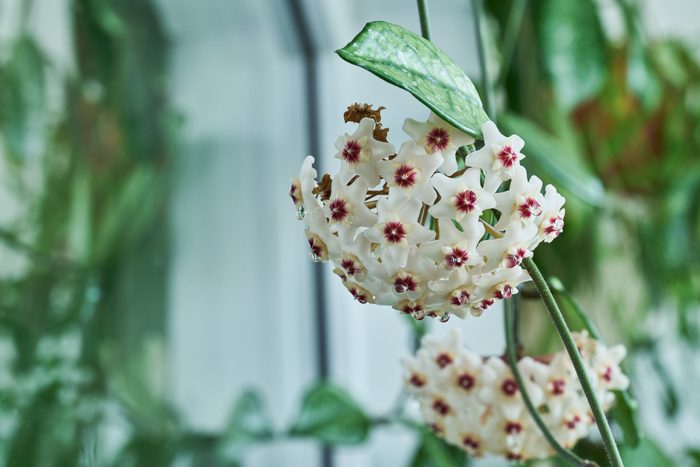
Top 10 Fragrant Indoor Plants to Perfume Your Home

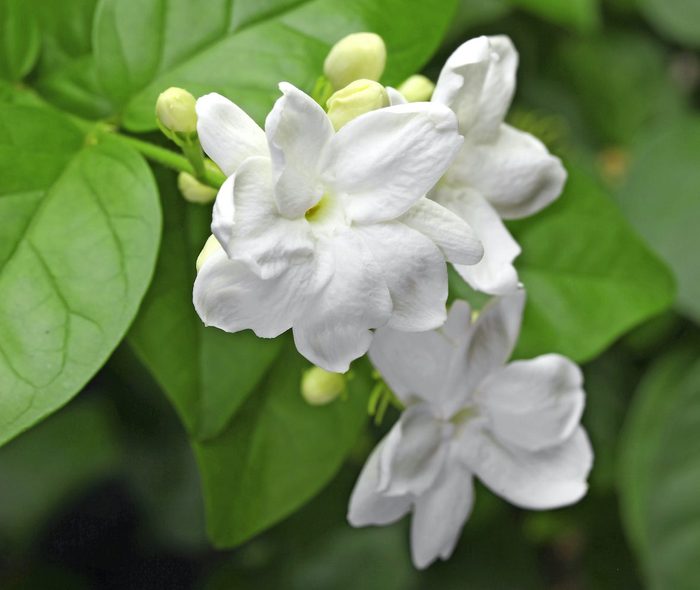
Arabian Jasmine
Jasminum sambac, Zones 9 to 11
This tropical vine can reach up to 25 feet tall in sunny climates, like Hawaii, where its star-shaped flowers are used to make sweetly scented leis. In cooler zones, give it a summer vacation outdoors and bring your plant inside in September to a bright sunny room and water lightly while dormant until spring.
Why we love it: Where happy, Arabian jasmine will bloom repeatedly, giving you more reasons to swoon.
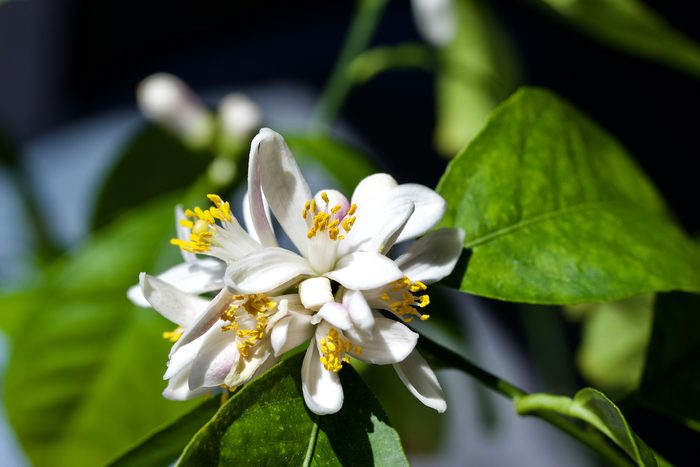
Meyer Lemon
Citrus limon, Zones 8 to 11
This dwarf lemon tree is easy to move indoors if you live in cooler zones. It boasts dreamily fragrant blooms and sweeter fruit than standard lemons — traits prized by chefs.
Why we love it: This self-pollinating compact citrus can bloom its first year and be pruned to live happily in a pot.

Wax Plant
Hoya carnosa and other species, Zones 8 to 11
Vining plants with thick, glossy leaves in myriad colorways are great roommates, asking only for six hours of bright indirect sun, such as a partially obscured south- or west-facing exposure. Bring hoya plants inside before temperatures go below 50 degrees.
Why we love it: These adaptable plants grow with little attention, even in lower light. The luscious flowers require good light to form, and may take several years to appear, but the wait is worth it.
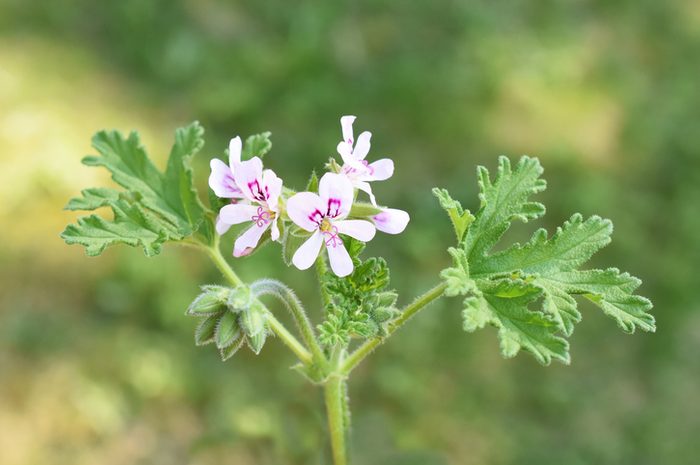
Scented Geraniums
Pelargonium selections, Zones 10 to 11
These are not your average geraniums. Their scented leaves — ranging from orange and lemon to chocolate and nutmeg — can transport you to a citrus grove, herb garden, or candy store with just a rub. Their preferred temperature range is 45 to 70 degrees. Indoors, full sun in winter and partial in summer is ideal, with good drainage and humidity.
Why we love it: Their leaves come in an array of ornamental shapes and textures, which can also be used for teas, making a delicious and romantic addition to your scented collection.
Fun fact: Aromatherapy brings our enjoyment of nature and its benefits to another level. A 2021 study in Sweden over five years showed that exposure to natural plant scents, especially scented geranium (Pelargonium) can facilitate stress reduction and promote mental recovery.
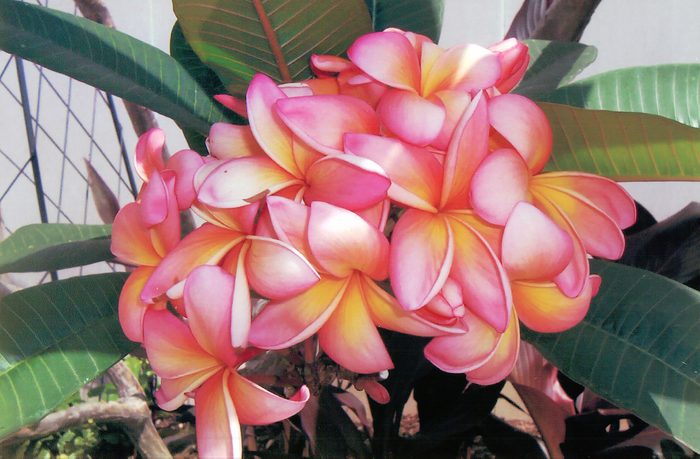
Frangipani
Plumeria rubra
This stunning tree can reach 10 feet tall, laden with flowers, often used to scent perfume and candles. Well-draining soil, annual pruning, and a winter dormancy in a cool space (55 to 60 degrees) will keep those tropical flowers coming. Another tip is to avoid overpotting; go up only one pot size yearly.
Why we love it: Plumeria makes an unforgettable focal point that will perfume your summer soirees.

Stephanotis
Stephanotis floribunda, Zones 10 to 11
Evergreen in its hardiness range, the stephanotis vine has thick, sturdy leaves and deliciously fragrant white blossoms often mistaken for jasmine. A summer stint outside with fertilizer will spur growth, but bring it inside before temps dip below 39 degrees. It usually goes dormant in cool indoor temperatures, so you should water less frequently.
Why we love it: This long-lived plant is undemanding, providing wedding bouquets for years to come.
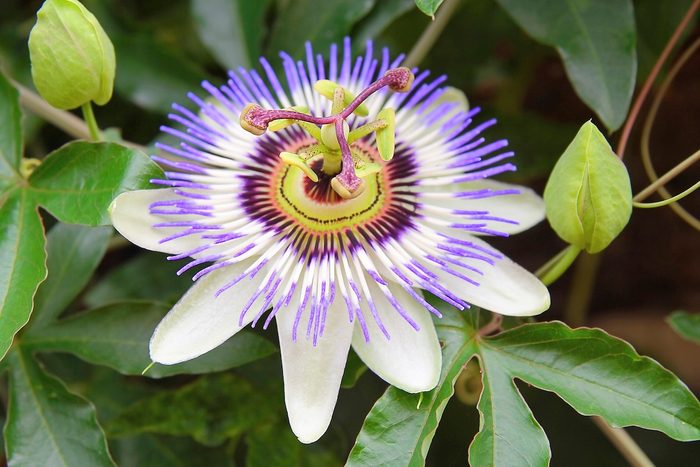
Passionflower
Passiflora incarnata and Passiflora mooreana, Zones 5 to 10
Passionflowers’ exotic — even otherworldly — blooms are reason enough to grow them, but these two species also bring fragrance to the mix. A wonderful greenhouse plant, they prefer high humidity and light in greenhouse conditions.
Why we love it: These vigorous vines take to training and pruning. Consider putting them on florist forms or trellis shaped in hoops or hearts!
Psst—you should also grow passionvine as a host plant for butterflies.
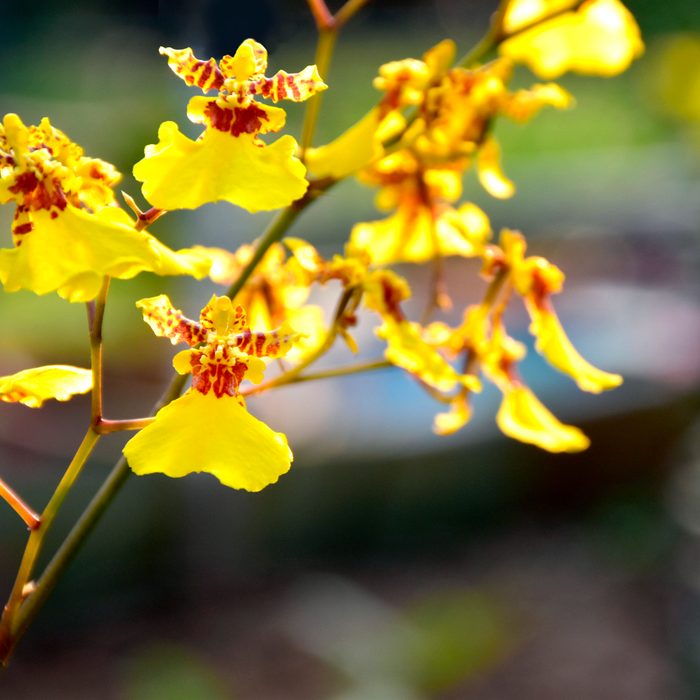
Oncidium Orchid
Oncidium, Zones 10 to 12
Commonly known as dancing lady, oncidium orchids are relatively easy to grow indoors — just avoid a north-facing window. They prefer daytime temperatures of 80 to 85 degrees and nighttime lows in the 60s. Temperature drops at night can encourage flowering.
Why we love it: You can find a variety of flower shapes and especially scents, including vanilla and chocolate! Look for ‘Sharry Baby,’ ‘Twinkle Fragrant Fantasy,’ and ‘Heaven Scent.’
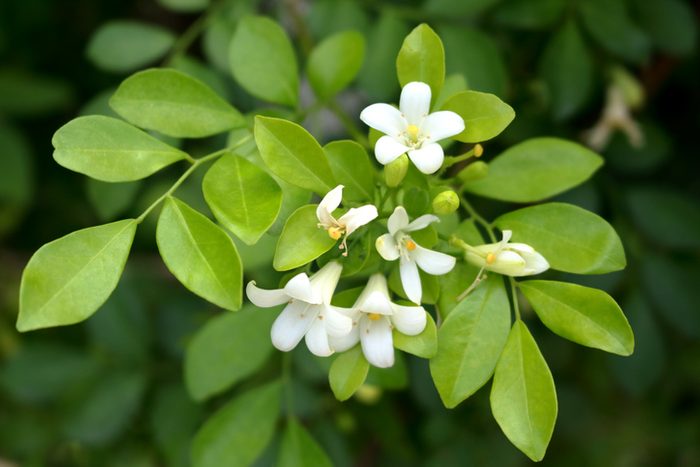
Orange Jessamine
Murraya paniculata, Zones 10 to 12
Bringing tropical vibes all day with intense orange-blossom-scented blossoms, orange jessamine loves humidity over 50%, and clay pots help preserve the moisture it needs.
Why we love it: Orange jessamine blooms repeatedly and can thrive in a pot for years.
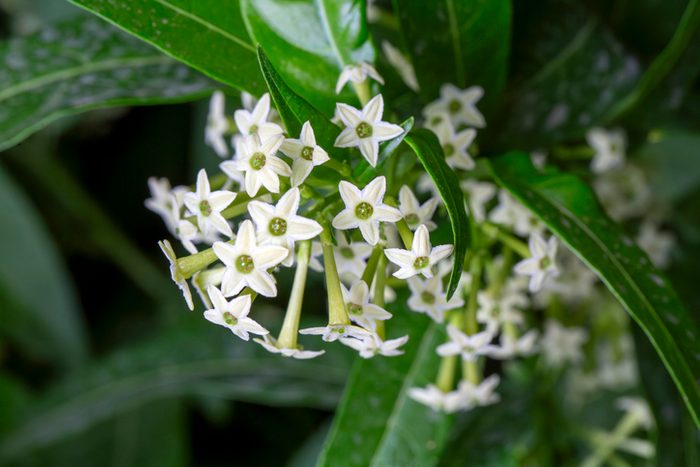
Night-Blooming Jasmine
Cestrum nocturnum, Zone 9 to 11
One of the most famously fragrant plants, night-blooming jasmine’s heady scent might just inspire a party when it flowers. They like humidity over 50%, bright indirect light, and to let their soil dry slightly between waterings.
Why we love it: This species is everblooming and takes pruning for size easily.




















